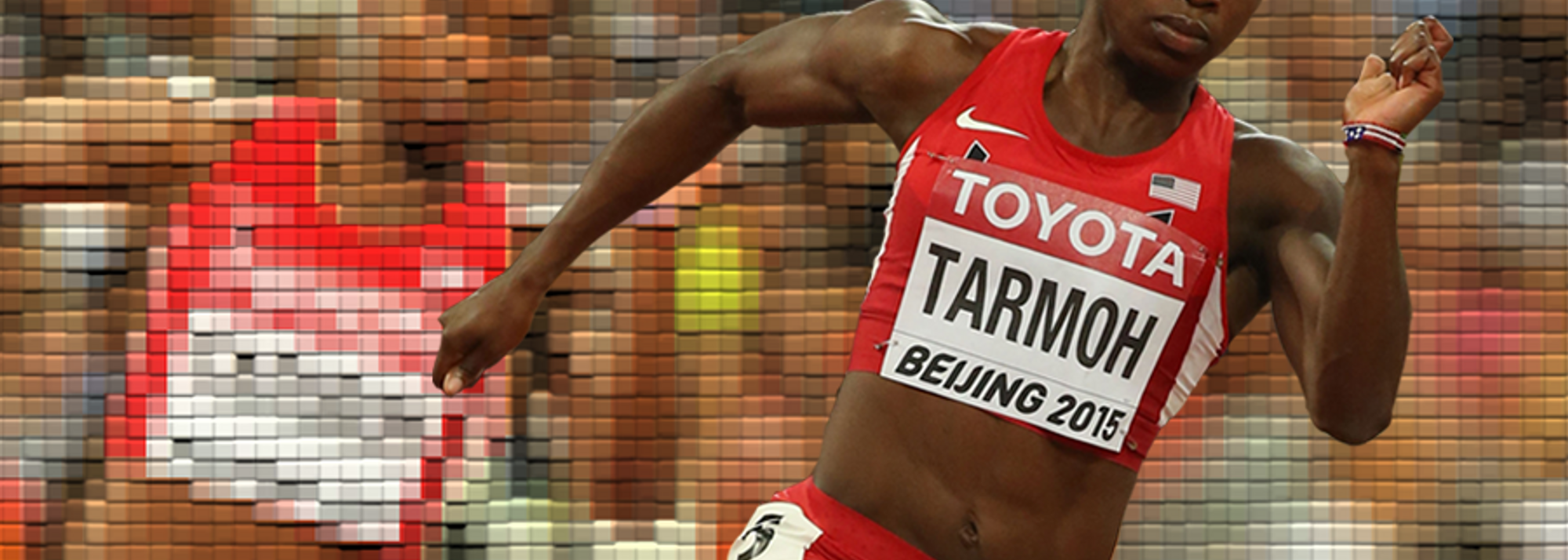Jeneba Tarmoh Spikes Cover
World champs 200m finalist Jeneba Tarmoh's four-step guide to running the curve.
1. Curve mechanics
Jeneba Tarmoh learned the technique vital to running a good bend from Vince Anderson, her college coach at Texas A&M, and she believes it has stood her in good stead ever since.
“It’s the crossover motion of placing your right foot directly in front of your left foot. When your right foot is out, your left arm naturally crosses to moving over your chest,” the 2014 US champion says.
“I love to dance and, as I am really goofy, I invented a dance which helped explain curve mechanics. If I dance, it helps me pick things up really quickly.
“Some athletes just run the bend and don’t think about curve mechanics, but I find it helps me run as smoothly and quickly as possible.”
Tarmoh finished third at last year's US outdoor champs to qualify for the Beijing World Championships, finishing sixth in the final
2. Block position
Every fraction counts in the 200m, so it makes sense to run on the inside of your lane to cut excess distance. For an athlete to best achieve this, it is important that the starting blocks for a 200m race are angled towards the inside of the lane.
“Some athletes set their blocks at a really sharp angle, it just depends on personal preferences,” Tarmoh explains.
“I have mine at a slight angle and hope to reach my perfect spot on the inside of the lane after about 10m.”
3. Race pace
Unlike the 100m, the 200m involves an element of race tactics. The bend will invariably reveal the race strategy of each athlete.
While some sprinters prefer to hold back in this first half of the race, Tarmoh’s approach is far more gung-ho.
“I usually hit the bend running at 100 per cent because I’m that kind of runner,” the 26-year-old explains. “I like to hit it hard and whatever happens, happens.”
Team player Tarmoh has regularly contributed to US 4x100m relay success, most notably winning Olympic gold at London 2012
4. Body position
Some athletes have a tendency to lean slightly into the bend. However, Tarmoh has scoliosis – a curvature of the spine also suffered by Usain Bolt – and therefore prefers to stay as upright as possible to avoid the onset of pain in her back.
Where possible she also tries to avoid running in lanes one, two and three. Last winter she even quit her weight programme to further ease the stress on her back.
“I’ve taken out my Olympic lifts. I don’t squat, power clean or snatch,” says Tarmoh – a 22.23 200m sprinter at her best.
“I now do strengthening work on the smaller muscles in my back. I incorporate a really intense rehab programme into my training instead of lifting.”
CLICK THESE WORDS to read more about Jeneba Tarmoh





